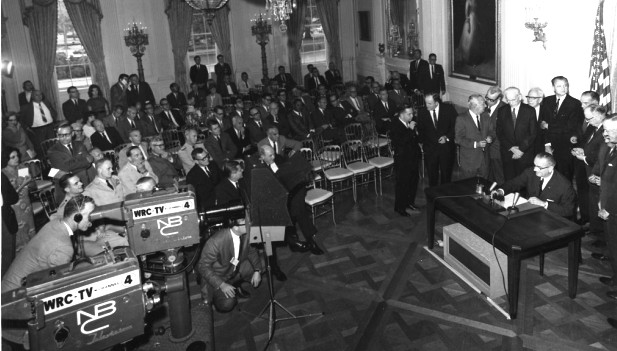Các bác đừng quên là chỉ kiếm một cái cớ nhỏ như vậy thôi, mà Mỹ đã gây chiến ở Vietnam trong cả chục năm trời ! Gớm cho cái anh Chí Phèo Mỹ, mọi người cứ phải nhịn anh như nhịn cơm sống ấy !
Lãnh đạo một đất nước là nó khó lắm, không phải cứ chỉ muốn tiền với chiến tranh là xong đâu ! Chịu khó chút, đừng tham quá, chết đi rồi thì cũng trần như nhộng mà thôi !

http://baotanglichsu.vn/portal/vi/Tin-tuc/Theo-dong-lich-su/2013/11/3A923C07/

http://nghiencuuquocte.org/2015/08/07/quoc-hoi-my-thong-qua-nghi-quyet-vinh-bac-bo/
1964
Congress passes Gulf of Tonkin Resolution
The United States Congress overwhelming approves the Gulf of Tonkin Resolution, giving President Lyndon B. Johnson nearly unlimited powers to oppose “communist aggression” in Southeast Asia. The resolution marked the beginning of an expanded military role for the United States in the Cold War battlefields of Vietnam, Laos, and Cambodia.By 1964, America’s ally, South Vietnam, was in serious danger of falling to a communist insurgency. The insurgents, aided by communist North Vietnam, controlled large areas of South Vietnam, and no amount of U.S. military aid and training seemed able to save the southern regime. During the presidencies of Dwight D. Eisenhower and John F. Kennedy, hundreds-and then thousands-of U.S. military advisers had been sent to South Vietnam to train that nation’s military forces. In addition, hundreds of millions of dollars in military and economic assistance had been given to South Vietnam. The administration of President Lyndon B. Johnson made the decision that only direct U.S. military intervention in the conflict could turn the tide. However, Johnson was campaigning in the presidential election of 1964 as the “responsible” candidate who would not send American troops to fight and die in Asia. In early August, a series of events occurred that allowed Johnson to appear statesmanlike while simultaneously expanding the U.S. role in Vietnam.
On August 2, North Vietnamese torpedo boats attacked an American destroyer in the Gulf of Tonkin. Johnson responded by sending in another destroyer. On August 4, the two destroyers reported that they were under attack. This time, Johnson authorized retaliatory air attacks against North Vietnam. He also asked Congress to pass the Gulf of Tonkin Resolution. This resolution declared, “The United States regards as vital to its national interest and to world peace the maintenance of international peace and security in Southeast Asia.” It also gave Johnson the right to “take all necessary measures to repel any armed attack against the forces of the United States and to prevent further aggression.” The House passed the resolution by a unanimous vote; the vote in the Senate was 88 to 2. Johnson’s popularity soared in response to his “restrained” handling of the crisis.
The Johnson administration went on to use the resolution as a pretext to begin heavy bombing of North Vietnam in early 1965 and to introduce U.S. combat troops in March 1965. Thus began a nearly eight-year war in which over 58,000 U.S. troops died. In a wider sense, the Gulf of Tonkin Resolution can be considered America’s Cold War policy toward all of Southeast Asia at the time. The resolution was also another example of the American government’s less than candid discussion of “national security” matters during the Cold War. Unspoken during the Congressional debate over the resolution was the fact that the commanders of the U.S. destroyers could not state with absolute accuracy that their ships had actually been attacked on the night of August 4, nor was any mention made of the fact that the U.S. destroyers had been assisting South Vietnamese commandos in their attacks on North Vietnamese military installations. By the late 1960s, the tangle of government deceptions and lies began to unravel as public confidence in both Johnson and the American military effort in Vietnam began to erode.
http://www.history.com/this-day-in-history/congress-passes-gulf-of-tonkin-resolution
Aucun commentaire:
Enregistrer un commentaire